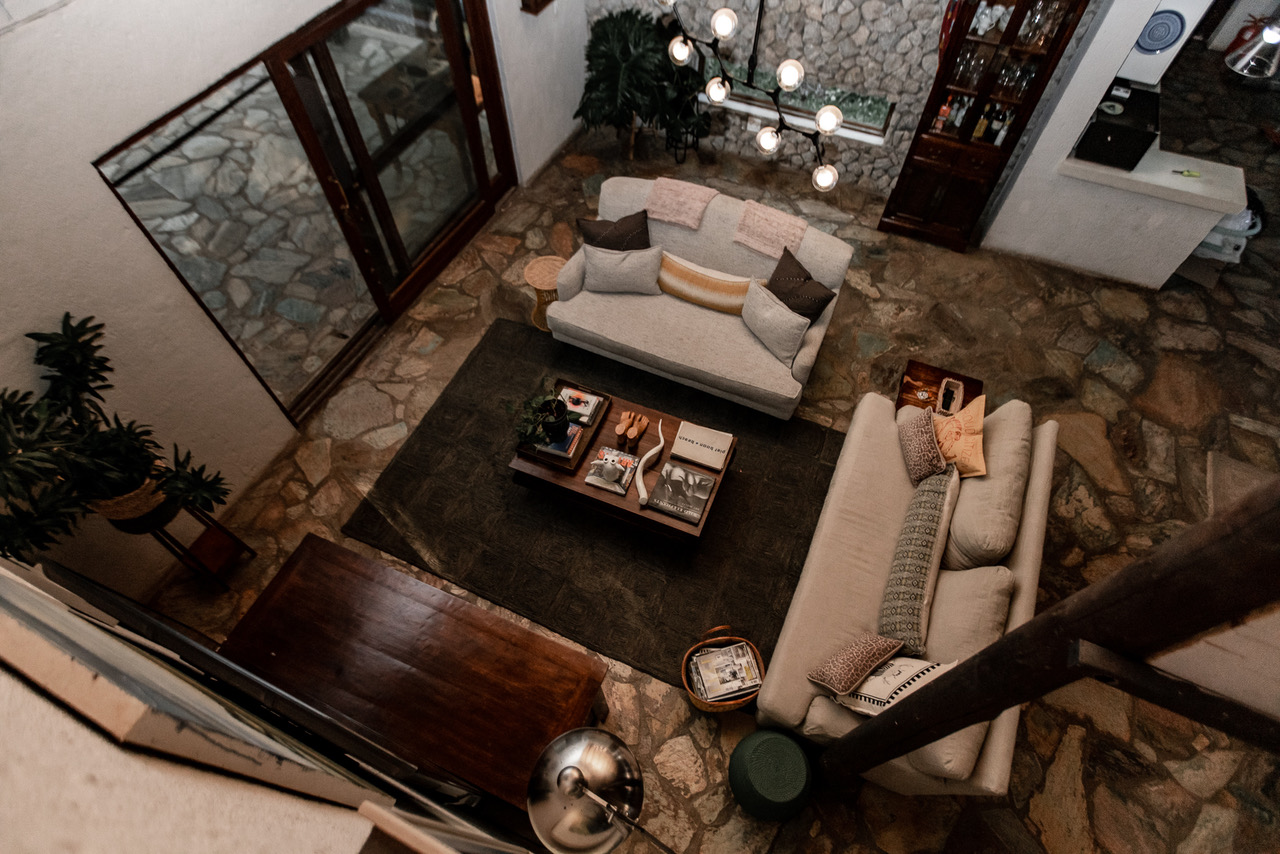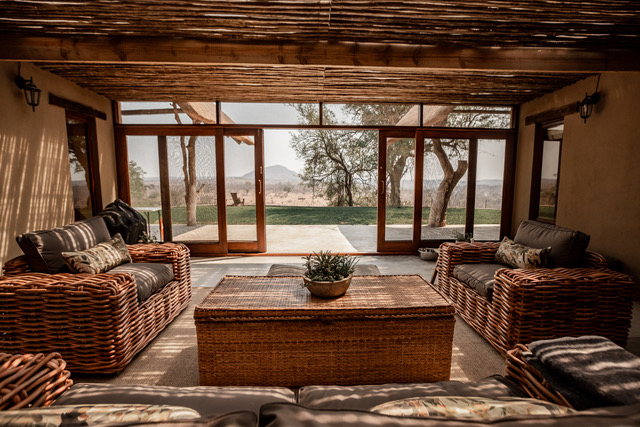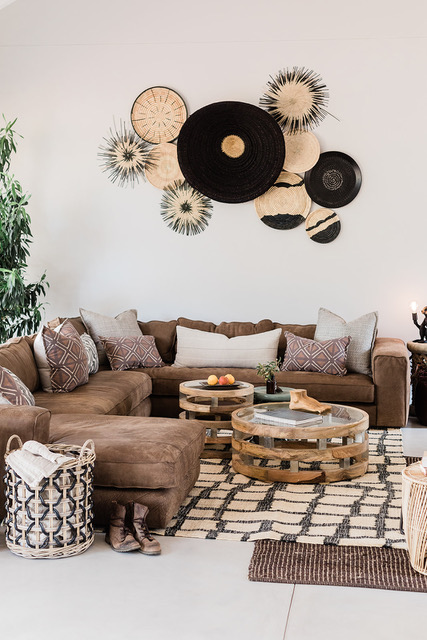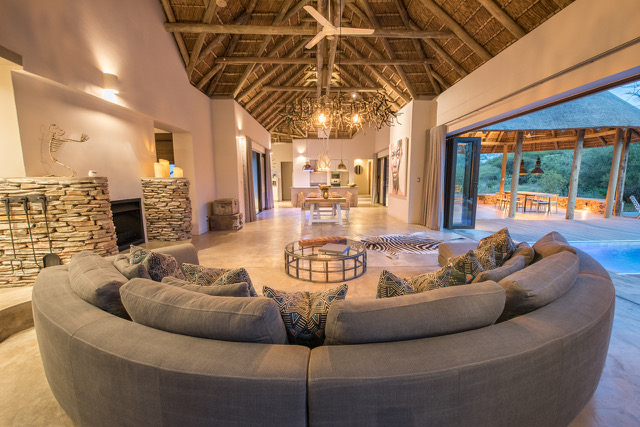Fabrics for Upholstery
Given the frequent usage of upholstered furniture, it is essential that the chosen fabric is sturdy enough to endure constant use. Considerations must be made for individuals sitting on chairs or lounging on sofas while watching television or engaging in playful activities such as pillow fights. Furthermore, pets may seek cosy corners on these surfaces after muddy walks. To meet these demands, upholstery fabric is typically heavyweight with either a pile or flat weave. Moreover, woven patterns are commonly used instead of dyed-in patterns.
While thick upholstery fabrics are unsuitable for clothing or bedding due to their lack of suppleness and softness, their durability can be determined by assessing their "Double Rub" rating. This measurement replicates wear and tear by dragging a mechanical arm back and forth over the fabric surface until marks or damage occur. The higher the "Double Rub" count indicates greater durability of the material.
When selecting upholstery fabric, factors like ease of cleaning should be considered if heavy use items like family sofas are involved. Machine washing is simpler and more cost-effective than dry cleaning when stains and dirt become an issue. Additionally, one must decide between fitted or loose covers based on practicality requirements influenced by factors such as young children or pets in the household.
Cotton Canvas Fabric
Cotton canvas fabric is known for its affordability, breathability, durability, and ease of cleaning, making it a popular choice for upholstery and furniture projects. Here are some key points to consider about cotton canvas fabric:
1. Affordability: Cotton canvas fabric offers a cost-effective alternative to leather upholstery. With prices significantly lower than leather, you can obtain durable cotton fabric without breaking the bank. For those new to reupholstering, opting for extra-wide canvas eliminates the need for piecing together materials.
2. Breathability: A major advantage of using cotton canvas is its breathability. The fabric allows air to flow through it, resulting in faster drying times after cleaning. This breathability also helps prevent the growth of mould or mildew in humid climates. Additionally, it protects the underlying wood framing from moisture damage such as mould and dry rot.
3. Durability: On average, canvas upholstery lasts around 12 years compared to the typical lifespan of seven or eight years for other sofa fabrics. Choosing thicker cotton canvas can further enhance its longevity.
4. Ease of Cleaning: Proper maintenance plays a crucial role in extending the lifespan of your sofa fabric, and cotton canvas makes cleaning easy. A solution of white distilled vinegar and water can be used with a steam upholstery cleaner to keep the fabric looking like new. Vacuuming or using a brush and dustpan effectively removes crumbs without causing stretching or wrinkling.
Considering these factors, it becomes evident why cotton canvas is considered one of the premier choices for upholstery and furniture projects. Its affordability combined with breathability, durability, and ease of cleaning make it an innovative option that delivers both practicality and style in interior design endeavours.
Duck Fabric: What Is It
Duck fabric, also known as canvas, is a heavy, plain-woven material commonly used in workwear and sailmaking due to its exceptional strength and tear resistance. This fabric is woven with two yarns together in the warp and a single yarn in the weft, resulting in a sturdy construction. The term "duck" originates from the Dutch word "doek," which refers to a linen canvas historically used for sailors' clothing. Although cotton duck may sound like it is related to waterfowl or their feathers, it is simply called "duck" to distinguish it from traditional linen canvas.
Cotton duck has become the go-to choice for workwear due to its numerous advantages. Its relatively smooth surface makes it resistant to snagging and tearing, ensuring durability and longevity. Additionally, this fabric provides excellent wind-blocking capabilities, second only to leather among true workwear fabrics. It offers some level of burn resistance compared to synthetic materials like nylon, making it suitable for environments with sparks or hot ashes.
Initially stiff and uncomfortable, cotton duck becomes more comfortable after being washed and worn several times. Despite its practicality in workwear applications, cotton duck also finds use in sailmaking and traditional boat sails due to its ability to withstand rough wear and tear. Furthermore, this versatile fabric can be found in four-walled tents and other shelters.
Microfibre Fabric for Upholstery
One advantage of microfiber upholstery fabric is its ability to resist stains and repel water due to its tightly woven structure. This makes it a popular choice for individuals with children or those looking for durable furniture options. Microfiber fabric boasts several benefits that make it an innovative and practical choice for upholstery:
1. Superior stain resistance: The tightly woven fibres of microfiber create a barrier that prevents liquids from penetrating the fabric. This means that spills, even highly staining substances like wine or coffee, can be easily wiped away without leaving traces if attended to promptly.
2. Easy cleaning: Microfiber upholstery fabric is known for its ease of cleaning. Its smooth texture allows dirt and debris to be effortlessly brushed off, and most stains can be removed with a mild detergent and a damp cloth.
3. Durability: Microfiber is extremely durable due to its tightly packed fibres, which are thinner than a human hair in most cases. This resilience ensures that the fabric retains its shape and colour even after extended use, making it an excellent investment for long-term furniture pieces.
4. Wide range of colour options: Microfiber upholstery comes in an array of vibrant colours, from traditional neutrals to bold shades like tangerine or plum. These colours are resistant to fading, even when exposed to direct sunlight or varying temperatures.
Linen Canvas for Upholstery
Linen canvas upholstery fabric possesses a number of desirable characteristics that make it an excellent choice for furniture, including its natural strength, durability, and resistance to stains. Linen fabric is known for its exceptional durability due to its inherent strength. This quality allows linen upholstery to withstand the rigours of daily use without showing signs of wear and tear for an extended period of time.
In addition to its strength, linen canvas upholstery fabric is also resistant to stains. This makes it an ideal choice for those seeking a low-maintenance option for their furniture. The natural fibres in linen have a tight weave that prevents liquid from penetrating the fabric easily, making it easier to clean and maintain the original appearance of the upholstery.
Furthermore, linen canvas upholstery fabric offers a smooth and cool feel to the touch, providing added comfort for users. Its antistatic properties also ensure that dust does not accumulate easily on the surface, reducing cleaning efforts required.
Moreover, linen canvas upholstery fabric is versatile in terms of design options. It can be dyed or printed with various patterns and colours, allowing for customizable choices that cater to individual preferences.
Overall, linen canvas upholstery fabric stands out as a premier choice for furniture due to its natural strength, durability against wear and tear, stain resistance properties, comfortable texture, low maintenance requirements, and design versatility. Its combination of practicality and aesthetic appeal makes it an innovative option that caters to those seeking both functionality and style in their upholstered furniture pieces.
Performance Fabrics for Upholstery
Performance fabrics are a popular choice for upholstery due to their durability, stain resistance, and easy maintenance. Unlike natural fabrics like linen canvas, performance fabrics are made from a blend of synthetic fibres and natural fibres that provide enhanced functionality. These fabrics have unique properties that make them suitable for various applications in both residential and commercial settings.
1. Enhanced Durability: Performance fabrics, which typically contain synthetic fibres such as nylon, polyester, or spandex, are known for their superior strength and resilience. They can withstand frequent use without showing signs of wear and tear. This longevity ensures that the upholstery will last longer and require fewer replacements over time.
2. Stain Resistance: One of the key advantages of performance fabrics is their ability to resist stains and dirt. They repel liquids, making it easier to clean up spills quickly without causing any permanent damage to the fabric. This feature is particularly beneficial in high-traffic areas or environments where accidents are more likely to occur.
3. Easy Maintenance: Performance fabrics require minimal upkeep compared to other materials commonly used for upholstery. They can be easily cleaned with cold water or mild detergent if necessary, eliminating the need for professional dry cleaning services or harsh chemical treatments. This low-maintenance characteristic saves time and effort while maintaining the fabric's appearance.
4. Versatile Application: Performance fabrics are not limited to specific uses but can be utilised in various furniture pieces such as sofas, chairs, ottomans, or even curtains and rugs. Their versatility allows designers and homeowners alike to incorporate these functional materials into different spaces throughout the home or office.
Leather in Upholstery: Keep in Mind
Leather used in upholstery presents important considerations due to its significant environmental impact and potential health risks associated with the tanning process. The production of leather, particularly cow skin leather, ranks as the third most environmentally impactful material, surpassed only by silk and alpaca wool. Despite advances in synthetic alternatives such as polyurethane (PU) leather, the carbon footprint of cow skin leather remains substantial. Additionally, the production of animal-derived leather requires large quantities of water and chemicals, contributing to habitat destruction and climate change.
Notably, the land use efficiency of leather production is highly inefficient. A considerable amount of cleared land is needed to produce a relatively small quantity of leather. This practice contributes to deforestation and loss of biodiversity on a global scale. The clearance of native habitats for agriculture is a leading cause of habitat destruction and exacerbates carbon emissions by reducing carbon-absorbing trees.
Moreover, the tanning process poses significant health risks for workers involved in leather production. Chromium, formaldehyde, arsenic, and other carcinogenic chemicals are commonly used in this process. Exposure to these substances increases the risk of various cancers and other health problems among workers. Furthermore, communities surrounding tanneries suffer from pollution that contaminates their water sources.
In light of these concerns, individuals seeking premier upholstery fabrics must carefully consider the environmental impact and potential health risks associated with using leather. Exploring alternative materials like synthetic PU leather can provide innovative solutions that reduce both ecological harm and health hazards posed by traditional animal-derived leathers. By embracing sustainable alternatives in upholstery fabric choices, consumers can play a crucial role in promoting environmentally conscious practices within the industry while supporting their own well-being.
Best Type of Fabric for Upholstery
Polyester is a popular choice for upholstery fabric due to its durability, versatility, and wide range of available colours and patterns. 1) Durability: Polyester is known for its high resistance to wear and tear, making it ideal for furniture that experiences heavy use. Its strong fibres are less likely to break or fray compared to other fabrics. Additionally, polyester has good stain resistance properties, making it easier to clean and maintain. 2) Versatility: This fabric can be used in various settings, from homes to offices and even outdoor spaces. It can withstand different climates without fading or deteriorating quickly. Moreover, polyester upholstery fabric can be found in different textures such as velvet, chenille, or microfiber, allowing individuals to choose the one that best suits their preferences and needs. 3) Wide Range of Colors and Patterns: Polyester offers an extensive selection of colours and patterns that cater to diverse design aesthetics. Whether someone desires a bold statement piece or a subtle neutral tone, there is a polyester fabric option available for every style preference. 4) Affordability: Polyester upholstery fabric tends to be more affordable than natural fibres like cotton or silk. This makes it an attractive choice for those on a budget who still want quality upholstery options without compromising on style.
proudly powered by safari web online
All Rights Reserved | Kuku Interiors







